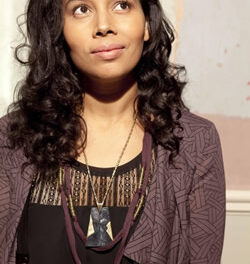As the result of a program change, The North Carolina Symphony presented three perspectives on the Classical style, prefaced by a fanfare of – well, chickadees. Unfortunately, the originally scheduled Sinfonia Concertante for Cello and Orchestra by Sergey Prokofiev was scratched in favor of the Haydn Cello Concerto in C. We had looked forward to the seldom-performed Prokofiev and were doubly disappointed that Canadian cellist Denise Djokic’s light, and sometimes slippery, bowing in the Haydn didn’t set the world on fire. On the other hand, Music Director Grant Llewellyn led the orchestra in performances of the concerto, Haydn’s Symphony No. 39 and Beethoven’s No. 1 in the next best thing to a run on original instruments.
In a class by itself was Duke composer Stephen Jaffe’s contribution to the North Carolina Postcard series, “Poetry of the Piedmont” (“Poesis Piemontosa”). The delightful eight-minute work is a rendering of sounds characteristic of our state – something of a mini double concerto for black-capped and Carolina chickadees and orchestra, whose calls Jaffe transformed for the orchestra into the principal theme. One percussionist performed on a Mac laptop, which regularly emitted perfectly synchronized and amplified recorded chickadee calls. Despite other musical and electronic quotes from real life, the birds had star billing and were clearly closest to Jaffe’s heart. If you missed Poetry, it was recorded by Bridge Records at this world premiere as part of a CD of Jaffe’s music. And because the audience was all so “well behaved” – with no coughs, sneezes or crying babies – Llewellyn treated it to another amusing Jaffe miniature, “Cut Time,” also recorded in situ.
Despite our disappointment about the concerto substitute, the rest of the evening turned out to be a well-played historical overview of the various sub-styles of the Classical period. The Haydn Cello Concerto is one of those chestnuts that gets over-aired on classical radio, so one gets to hear it in nearly unmatchable performances with pristine CD quality by such world-class soloists as Yo-Yo Ma, Mstislav Rostropovich, Lynn Harrell and the like. Djokic’s rendering was generally capable, especially in the bravura passages and first movement cadenza, but lacked emotional commitment. Strangely, she had more than the permissible number of misses in slurs during cantilena passages.
For the second half of the program the orchestra offered two symphonies, from the beginning and the end of the Classical period. Haydn’s Symphony No. 39 in G minor represents the composer’s debt to C. P. E. Bach’s Sturm und Drang (Storm and Stress) style. The most talented of Johann Sebastian’s kids, Carl Philip Emmanuel was certainly not as over-the-top as his elder brother Wilhelm Friedman, yet he established a signature style of angular melodies, irregular phrases, sudden dynamic shifts, and abrupt pauses. Meant in its day to express in music great emotional feeling and upheaval, the style often attracts his present-day fans as delightfully quirky, rather than emotionally charged. Haydn’s Sturm und Drang contribution is the most outré of his series of symphonies in this style. We had the sense that this early example had been Haydn’s response to a patron’s request for – … you know, something with feeling like that Bach fellow at the Prussian court writes.” Llewellyn played it for all it was worth, exaggerating every sforzando, lengthening the erratic pauses, and emphasizing the musical battles between strings and winds. Given the succession of extremes, we wondered whether he also might have had tongue firmly planted in cheek.
That notion came to us, especially given his choice of pairing the Haydn with Beethoven’s Symphony No. 1, a piece replete with musical humor: its Introduction that begins on a chord progression in the “wrong” key; the slow movement’s faux-fugue; the stammered opening of the Finale; the sheer fun he had demonstrating everything you can do with a C major scale. Once again, Llewellyn and the orchestra played this chestnut with a combination of the zippy tempo born of recent Beethoven scholarship and a “twinkle in the eye.” We should add here that under Llewellyn, the fiddles have shaped up into a precision rapid-bowing machine.












